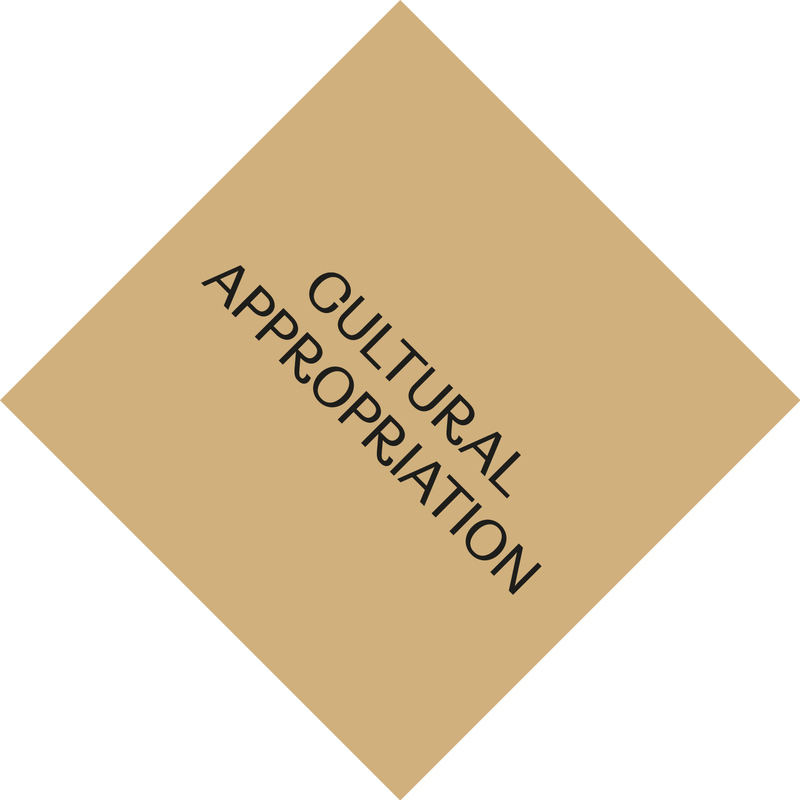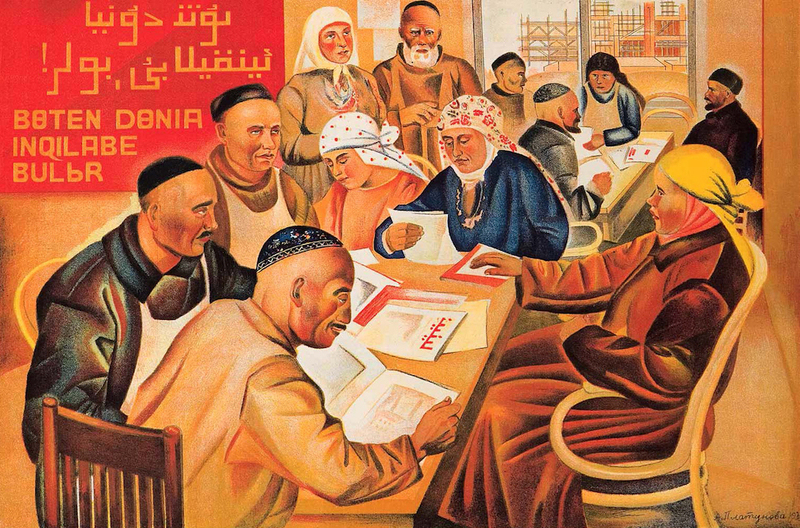
The word “infrastructure” usually brings to mind various constellations of buildings, roads, and cranes. However its definition “highlights the epistemological and political commitments involved in selecting” as it simultaneously distinguishes between what is seen as necessary for further operations. Susan Leigh Star elaborateselaboratesSusan Leigh Star, “The Ethnography of Infrastructure.” American Behavioral Scientist 43 (3, 1999): 377–91. on the relationality of this definition: “infrastructure becomes real in relation to organised practices.” So, she continues, for a cook the water supply system as well as heat supply and a local store would be “integral” to making dinner and thus would count as an infrastructure. Infrastructures cannot be defined as something outside of human participation, rather they shape and are shaped by human practice.
The infrastructural perspective is particularly productive for a decolonial approach, as it allows one to connect both struggles and resistances, which can otherwise seem discrete. In settler colonial contexts, “invasive infrastructuresinvasive infrastructuresAnna Lowenhaupt Tsing. “On Nonscalability: the Living World Is Not Amenable to Precision-Nested Scales.” Common Knowledge 18 (3, 2012): 505–24.” such as the ones of oil and gas extraction and transportation, reveal that “invasion is a structure, not an event.invasion is a structure, not an event.Patrick Wolfe, “Settler Colonialism and the Elimination of the Native.” Journal of Genocide Research 8 (4, 2006): 387–409.
” “Invasive infrastructures” do not only contribute to the slow destruction of the environment, they also take part in the displacement of indigenous people. Reaching beyond national borders, they “hold people togetherhold people togetherDeborah Cowen, “Infrastructures of Empire and Resistance.” January, 25. 2017. www.versobooks.com. Accessed August 20, 2019.
in a context of overlapping jurisdiction, transnational circulation, and rapid urbanization.” Yet “invasive infrastructures” that span across borders, can also connect the struggles of otherwise separate communities, creating a possibility of decolonial resistance.
While “invasive infrastructures” are protected at all costs by settler colonial regimes, the infrastructures of indigenous people are seen as something to be “modernized,” in more concrete terms, destroyed. The relational approach to infrastructures, proposed by Star, is especially productive when analyzing indigenous infrastructures, allowing one to see beyond infrastructures of extraction. For indigenous people, what counts as infrastructures could be “salmon, berries, and bearssalmon, berries, and bearsAnne Spice, “Fighting Invasive Infrastructures.” Environment and Society 9 (1, 2018): 40–56.” as well as multiple relations between human and more-than-human worlds.
As Deborah Cowen points outpoints outDeborah Cowen, “Infrastructures of Empire and Resistance.” January 25, 2017. www.versobooks.com. Accessed August 20, 2019., “infrastructure is by definition future-oriented,” meaning that it is infrastructure that determines who gets to survive and who does not. She further discussesfurther discussesDeborah Cowen, “Circulating Violence and Value.” Interview by Nicolo Cuppini. Social Text 37 (4, 2019): 95–102.
a tighter connection between social reproduction and infrastructure, pointing out that battles are won not solely by weapons, but more importantly by people, those who put clothes in washing machines, cook food, and mop floors. Pushing this definition further, Michelle Murphy proposesproposesMichelle Murphy, “Distributed Reproduction, Chemical Violence, and Latency.” S&F Online, 2013. Accessed April 16, 2020.
the term “distributed reproduction” to describe the infrastructural approach to social reproduction, which reveals the long-term consequences of both the material structures and the social relations that condition them. Not only do infrastructures maintain certain futures, they also require operations of maintenance. Large-scale infrastructures, like underwater shipping channels, are not stable entities; they are produced through the regular execution of maintenance operationsoperationsMichael Geffel, “From Landscaping to Infrastructure: The Scope and Agency of Maintenance.” Scenario Journal (blog). May 24, 2013.
. The usage of relational and process-oriented perspectives on infrastructure allows for the questioning of conventional views that privilege large-scale infrastructures, such as railroads and ports, while also allowing for a shift in perspective towards social relations and labor involved in the maintenance of both movements and containments.
The infrastructural approach might seem all encompassing, however it possesses an important limitation. The usage of the infrastructural perspective implies a shifting of scale. Anna Tsing definesdefinesAnna Lowenhaupt Tsing, “On Nonscalability: the Living World Is Not Amenable to Precision-Nested Scales.” Common Knowledge 18 (3, 2012): 505–24. “scalability” as “an ability to expand without distorting the framework,” however, the change of scale never happens without a qualitative change, which is concealed by global capitalism. Katerine T. Jones proposesproposesKatherine Jones, “Scale as epistemology.” Political Geography 17 (1): 25-28.
approaching scale as an “epistemological structure – a way of knowing and apprehending.” In regard to infrastructures, this might mean taking into account the frictions and disruptions that emerge when asking “what and when counts as infrastructure?”
Bibliography
Cowen, Deborah. “Infrastructures of Empire and Resistance.” January 25, 2017. www.versobooks.com. Accessed August 20, 2019.
Cowen, Deborah. “Circulating Violence and Value.” Interview by Nicolo Cuppini. Social Text 37 (4, 2019): 95–102.
Geffel, Michael “From Landscaping to Infrastructure: The Scope and Agency of Maintenance.” Scenario Journal (blog). May 24, 2013.
Jones, Katherine. “Scale as epistemology.” Political Geography 17 (1): 25-28.
Murphy, Michelle. “Distributed Reproduction, Chemical Violence, and Latency.” S&F Online, 2013. Accessed April 16, 2020.
Spice, Anne. “Fighting Invasive Infrastructures.” Environment and Society 9 (1, 2018): 40–56.
Star, Susan Leigh. “The Ethnography of Infrastructure.” American Behavioral Scientist 43 (3, 1999): 377–91.
Tsing, Anna Lowenhaupt. “On Nonscalability: the Living World Is Not Amenable to Precision-Nested Scales.” Common Knowledge 18 (3, 2012): 505–24.
Wolfe, Patrick. “Settler Colonialism and the Elimination of the Native.” Journal of Genocide Research 8 (4, 2006): 387–409.
Further reading in English
Alam, Ashraful, and Houston, Donna. “Rethinking Care as Alternate Infrastructure.” Cities 100 (May, 2020).
Easterling, Keller. Extrastatecraft: The Power of Infrastructure Space. London and New York: Verso.
Edwards, Paul. “Infrastructure and Modernity: Force, Time, and Social Organization in the History of Sociotechnical Systems.” In Modernity and Technology. Edited by T. J. Misa, P. Brey, & A. Feenberg. MIT Press, 2003.
Distributed cognition cooperative. “Caring for the shaky ground.”
Larkin, Brian. “The Politics and Poetics of Infrastructure.” Annual Review of Anthropology 42 (1, 2013): 327–43.
Signal Traffic: Critical Studies of Media Infrastructures. The Geopolitics of Information. Edited by Lisa Parks and Nicole Starosielski. Urbana: University of Illinois Press, 2015.
Radynski, Oleksiy. “Is data the new gas?” E-flux Journal 107 (March, 2020).
Steinberg, Philip E. “Of Other Seas: Metaphors and Materialities in Maritime Regions.” Atlantic Studies 10 (2, 2013): 156–69.
Vishmidt, Marina. “Beneath the Atelier, the Desert: Critique Institutional and Infrastructural.” In Once We Were Artists. A BAK Critical Reader in Artists’ Practice. Edited by Maria Hlavajova and Tom Holert. Utrecht: BAK, basis voor actuele kunst, 2017.
Верже Ф. Капиталоцен, мусор, раса и гендер / пер. В. Кравцовой // Ф-письмо. Syg.ma. — 11 ноября 2019.
Эдвардс П. Инфраструктура и модерн: сила, время и социальная организация в истории социотехнических систем / пер. А. Боровикова; под ред. Л. Юлдашева, А. Арамяна // Doxa. — 3 февраля 2019.
Кооператив распределенного сознания. Забота о зыбкой земле.
Шестакова А. Создавая инфраструктуры будущего // Garage Digital.
Кафе-мороженое / А. Дмитриевская, Д. Юрийчук // Syg.ma. — Коллекция «Труд».
Работай Больше! Отдыхай Больше!
Все растворяется в воздухе, кроме вопросов : коллективное письмо работниц культуры из разных регионов России // Артгид. — 4 сентября 2020.
Солза И. «Видимость» искусства как проклятие // Aroundart.org. — 19 августа 2019.
Дмитриева М. Фасадное кураторство и искусство добычи: об опыте в Сатке / М. Дмитриева, И. Шатавин-Достов, Е. Полякова // Aroundart.org. — 18 августа 2019.





